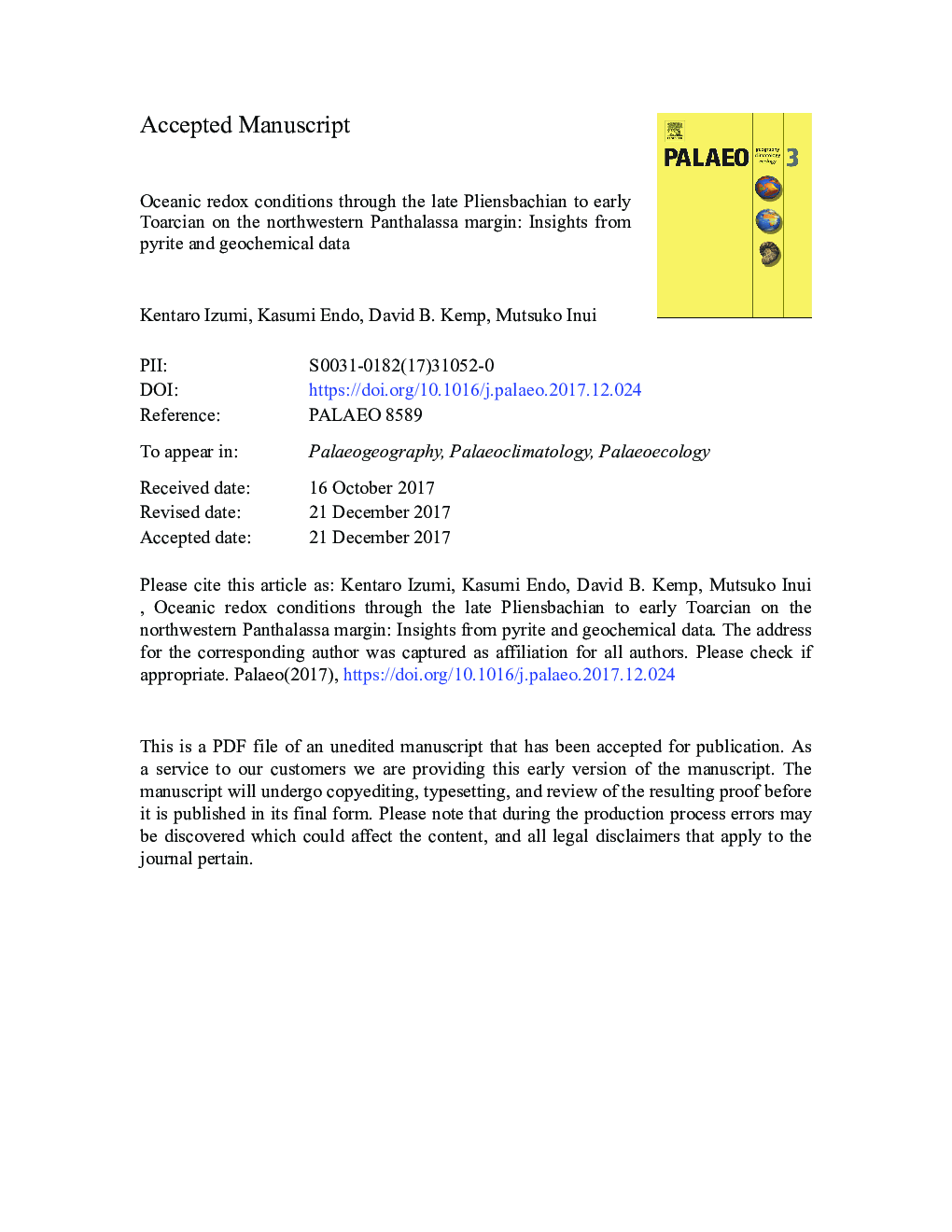| Article ID | Journal | Published Year | Pages | File Type |
|---|---|---|---|---|
| 8868371 | Palaeogeography, Palaeoclimatology, Palaeoecology | 2018 | 47 Pages |
Abstract
The early Toarcian oceanic anoxic event (T-OAE; ~Â 183Â Ma) was a significant palaeoenvironmental perturbation associated with marked changes in oceanic redox conditions. However, the precise redox conditions and redox history of various water masses during the T-OAE, especially those from outside the Boreal and Tethyan realms, are unclear. To address this issue, we present pyrite framboid data from an upper Pliensbachian to lower Toarcian succession deposited on the NW Panthalassa margin in a shallow-water setting (Sakuraguchi-dani section, Toyora area, SW Japan). Available data on lithofacies and redox-sensitive trace elements from the same succession suggest that dysoxic bottom-water conditions generally prevailed, with intermittent short-term oxygenation events. Size-distribution analysis of pyrite framboids reveals that framboid size populations from the silty mudstones during the T-OAE were characterized by small mean diameters and standard deviations. This suggests that euxinic conditions at least intermittently occurred during the T-OAE interval. Most likely, this water-column euxinia was associated with the expansion of an oxygen minimum zone linked to increased primary productivity. This interpretation is consistent with a previously reported increase in fluvial discharge and thus nutrient flux caused by a strengthening of the hydrological cycle.
Related Topics
Physical Sciences and Engineering
Earth and Planetary Sciences
Earth-Surface Processes
Authors
Kentaro Izumi, Kasumi Endo, David B. Kemp, Mutsuko Inui,
